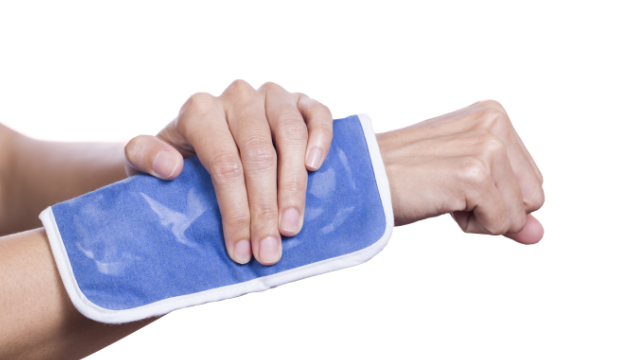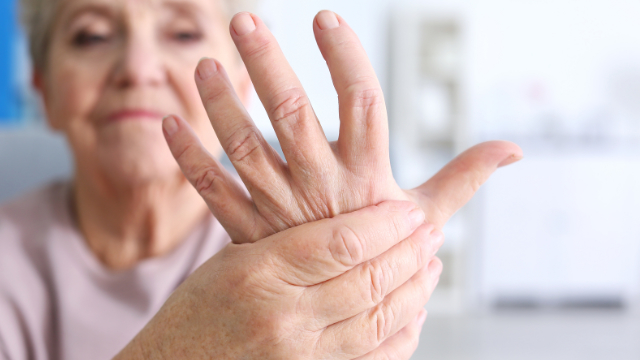
Shoulder pain can be one of the most disabling problems to deal with. Whether you realize it or not, you use your shoulder pretty frequently throughout most days, as it permits practically any movement that involves your arms. This is why any issue that causes pain and prevents your shoulder from moving normally can wind up being a burden to your daily life.
There are a number of conditions that can be responsible for shoulder pain, each of which may develop from a unique order of events. In some cases, the cause may be a single, traumatic event like a hard fall to the ground or sports-related injury. Tears of the rotator cuff (a group of muscles and tendons that stabilize the shoulder) and labrum (a rim of cartilage that lines the inside of the shoulder) often occur through this mechanism. Other cases of shoulder pain may develop gradually over the course of time due to repeated damage to the shoulder from overhead activities, which are usually referred to as overuse or repetitive strain injuries. These include conditions like rotator cuff tendinitis or shoulder impingement, and shoulder instability, tendinitis, and bursitis.
Unfortunately, there are also some conditions—like frozen shoulder—and cases of shoulder pain in which it’s not possible to figure out the exact cause, and sometimes problems in other parts of the body may be the culprit of pain in the shoulder. But regardless of what’s responsible, the end result for most people with shoulder pain is the same: daily challenges with any activities that require reaching overhead, across the body, or for far-away items. If you count yourself as one of the many who is impacted by shoulder pain and you deal with these issues regularly, a primary goal of yours is probably finding immediate relief.
Focusing on certain movements and avoiding others is the key
The good news is that there are plenty of ways for you to alleviate your shoulder pain right now. The key to this process is understanding that some movements and exercises can be helpful, while others can harm your shoulder and should be avoided. Below are some tips that you can follow to relieve your shoulder pain on your own, but be sure to consult with your doctor if you have any questions or your pain gets worse:
- Cold therapy: applying ice reduces blood flow, which will in turn decrease inflammation and swelling, and alleviate pain in the process; cold therapy is recommended immediately after pain strikes, and ice packs should be applied for 15-20 minutes, up to five times per day
- Heat therapy: applying heat to a painful shoulder increases blood flow and brings oxygen and nutrients to the area, which will accelerate the healing process and alleviate pain; this is recommended a few days after the onset of pain, and can be accomplished with a hot shower directly on the shoulder or a hot pack for 15-20 minutes; sometimes alternating hot and cold therapy is best
- Over-the-counter pain medications: some patients with mild shoulder pain can experience relief with pain medications that don’t require a prescription, particularly non-steroidal anti-inflammatory drugs (NSAIDs) like aspirin, ibuprofen (Advil), and naproxen (Aleve); NSAIDs alleviate pain by reducing inflammation, which is particularly applicable for rotator cuff conditions, tendinitis, arthritis, and other shoulder problems
- Activity modification: if you can identify the activity or set of movements that may have been responsible for your shoulder pain, it’s best to modify these activities by improving your form or avoiding them altogether whenever possible
- Sleeping style: sleeping on your bad shoulder can make matters worse, so try to sleep on your back or the side of your body unaffected by shoulder pain to avoid exacerbating the problem
- Massage: gently massaging your shoulder will help to alleviate stress and tension in the surrounding muscles, while also improving blood circulation and reducing swelling in the process, all of which can reduce your pain levels
- Shoulder exercises and stretches: regularly performing shoulder exercises can help improve your strength and flexibility, which is a key component of overcoming shoulder pain
- Codman’s rotation: also known as Codman’s exercise or the pendulum stretch, this is a simple exercise that can provide relief for most shoulder conditions, except shoulder instability; to perform it, bend forward at the waist with your back parallel to ground, and allow the involved arm to hang down, perpendicular to the floor; keep the arm and shoulder muscles relaxed, and move the arm slowly, either front to back, side to side, or in circles; repeat up to 20 times and switch directions
- Overhead shoulder stretch: while sitting or standing, intertwine your fingers in front of you, then bend your elbows and raise your arms above your head; next, gently squeeze your shoulder blades together to move your elbows back, and continue for up to 20 repetitions
- Arm-across chest stretch: hold your right hand out in front of you and keep it near your waist; reach your left hand behind your elbow, pulling your right arm to the left and across your chest; if you feel pain in your shoulder, lower your arm until the pain subsides; hold for 30-60 seconds, then relax and repeat with your left arm; repeat 3-5 times









